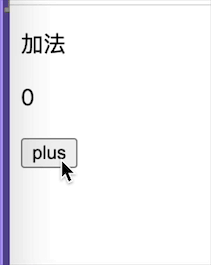相信很多人接触 Redux 时都会被它奇怪的 API 搞得云里雾里。这里不再冗述 Flux 架构的思想,实现 Flux 的工具有很多,它们只是在实现这种编程模式,并不会有太复杂的逻辑。事实也是这样,Redux 的 API 非常少,但并不一定容易理解。
createStore
createStore 没什么好说的,创建 Store,但其参数值得一提——一个称为 reducer 的函数。reducer 函数接受两个参数,state 与 action,依据 action 对 state 进行复制更新并返回:
const store = createStore((state = {counter: 0},action) => {
switch(action.type) {
case 'add':
return Object.assign({},state,{counter: state.counter + 1});
case 'minus':
return Object.assign({},{counter: state.counter - 1});
default:
return state;
}
});
combineReducers
辅助函数,分解 reducer 之用。如:
// 分解前
const reducer = (state = {counter: 0,status: 'idle'},action) => {
};
createStore(reducer);
// 分解后
const counter = (state = 0,action) => {};
const status = (state = 'idle',action) => {};
createStore(combineReducers({counter,status}));
可见 combineReducers 只不过把 state 的各个属性分解开来进行处理,再把处理后的数据合并起来。
applyMiddleware
一种 store enhancer,使用 compose 来强化 createStore 的能力。这一个理解起来非常绕的函数。它允许对 createStore 进行多层包装,并修改了返回的 store 对象,可以在 dispatch 操作前后执行其它逻辑,有点类似 AOP 的感觉。事实上只要包装 dispatch 方法就能实现这些功能,也印证了 Redux文档 的这句:
Middleware only wraps the store’s dispatch function. Technically,anything a middleware can do,you can do manually by wrapping every dispatch call,but it’s easier to manage this in a single place and define action transformations on the scale of the whole project.
bindActionCreators
辅助函数:
function addTodoActionCreator(text){ return { type: "add",text: text }; } // 调用 bindActionCreators(addTodoActionCreator,dispatch) 后 function addTodoAction(text){ dispatch({ type: "add",text: text }); } // 这样可以直接调用addTodoAction来派发 Action。
我们也可以实现自己的 bindActionCreators:
function bindActionCreators (actionCreators,dispatch) { if('function' === typeof actionCreators) { return function () { dispatch(actionCreators.apply(arguments)); }; } else { let ret = {}; for (let e in actionCreators) { if('function' === typeof actionCreators[e]) { ret[e] = bindActionCreators(actionCreators[e],dispatch); } } return ret; } }
compose
辅助函数,用以解构深度嵌套函数,体现了柯里化的编程模式,如:
function $1 (func) {
return function () {
return func.apply(null,arguments)+ '1';
};
}
function $2 (func) {
return function () {
return func.apply(null,arguments) + '2';
};
}
function $3 (num) {
return num;
}
$1($2($3))(3);// 321
(compose($1,$2,$3))(3)// 321
你也可以实现自己的 compose:
function compose () {
const args = Array.prototype.slice.call(arguments).reverse();
let tmp = args[0];
if (!tmp) {
return function (a) {
return a;
}
}
for( let i = 1; i < args.length; ++i){
tmp = (args[i])(tmp);
}
return tmp;
}
除了 Store 对象的方法外,这五个 Redux 的核心函数中有三个为辅助函数,执行各种“魔法”操作,如果没有这些预定义的函数,可能会增加冗余代码量,但绝不会影响你实现 Flux。
除了不十分常用并且仍可自实现的 applyMiddleware 之外,只有 createStore 为刚需函数,因此可见调用 Redux 并不复杂。这可能要联系到 Flux 架构这种单向的数据流转方式,对于解耦业务逻辑十分简单并且凑效。




